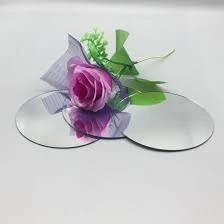

The Allure of Dark Green Reflective Glass A Modern Aesthetic in Architecture
In today's architecture and design landscape, materials are increasingly becoming a canvas for creativity and innovation. Among these materials, dark green reflective glass stands out as a particularly striking choice. This type of glass combines functionality with an alluring aesthetic, making it a favored selection in various applications, from commercial buildings to residential homes. But what makes dark green reflective glass so appealing, and how does it enhance the architectural experience?
Aesthetic Appeal
At the heart of the attraction to dark green reflective glass is its unique aesthetic quality. The deep, rich color adds a layer of sophistication and elegance to any structure, creating a striking contrast against other architectural elements. As light strikes the glass, it creates a dynamic play of reflections and shadows, enhancing the overall visual experience. This interplay of light not only captures attention but also transforms the appearance of the building as the natural light changes throughout the day.
Additionally, dark green reflective glass can serve to create a harmonious relationship with the surrounding environment. It mimics the hues found in nature, such as the foliage of trees or the depths of a serene lake. This connection to nature can help to soften otherwise rigid architectural lines, introducing an organic quality that appeals to modern sensibilities.
Energy Efficiency
Beyond its visual appeal, dark green reflective glass offers practical benefits, particularly regarding energy efficiency. Reflective glass is engineered to minimize solar heat gain, meaning that buildings can stay cooler during the hot months while reducing the reliance on air conditioning systems. This ability to naturally regulate temperature contributes to lower energy costs and a reduced carbon footprint, aligning with the growing emphasis on sustainability within architecture.
Moreover, the reflective quality of the glass controls glare, ensuring that interiors remain comfortable and conducive to various activities. In workplaces, educational institutions, and homes alike, this quality promotes productivity and well-being by allowing natural light to flood in while still maintaining visual comfort.

Versatility in Design
Dark green reflective glass is remarkably versatile, complementing a myriad of architectural styles and designs. From the sleek surfaces of modern skyscrapers to the more traditional façades of residential homes, this glass adapts to a wide range of aesthetics. It can be used extensively, wrapping entire buildings, or selectively, to accentuate specific features such as windows or atriums.
Furthermore, the material lends itself well to various design trends. For instance, the growing popularity of biophilic design—emphasizing a connection to nature—can be easily achieved using dark green reflective glass. Its color and reflective properties can create an immersive environment that mimics the outdoors, which has been shown to enhance well-being and creativity among occupants.
Challenges and Considerations
Despite its many advantages, there are challenges associated with the use of dark green reflective glass. For instance, excessive reflectivity may create issues with light pollution, particularly in urban environments. Architects and designers need to be mindful of the surrounding context, ensuring that the glass contributes positively to the urban landscape rather than detracting from it.
Additionally, maintenance and cleaning can be more demanding compared to traditional glass, as the reflective surface may require specialized care to maintain its lustrous appearance. Designers must incorporate these practical considerations into their plans to ensure a balance between beauty and functionality.
Conclusion
Dark green reflective glass embodies the intersection of modern aesthetics and practical benefits in contemporary architecture. Its captivating visual properties, energy efficiency, and versatility make it a sought-after choice for both new builds and renovations. As architects continue to push the boundaries of design, materials like dark green reflective glass will undoubtedly play a pivotal role in shaping the built environment of the future. Through thoughtful application, this glass can enhance not only the structures we inhabit but also the overall experience of space itself.